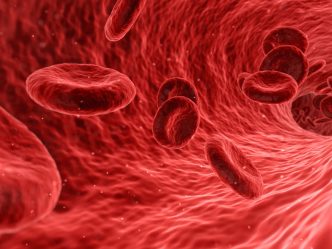More than 55,000 Americans will develop cancer of the head and neck (most of which is preventable) this year; nearly 13,000 of them will die from it.
“Early detection of head and neck cancer is the most important factor affecting cure rates, and function and quality of life after treatment,” said Dr. Kenneth Byrd, assistant professor of the Department of Otolaryngology.
Find it early and be cured
Tobacco is the most preventable cause of deaths related to head and neck cancer. In the United States, up to 200,000 people die each year from smoking-related illnesses. The good news is that this figure has decreased due to the increasing number of Americans who have quit smoking. The bad news is that some of these smokers have switched to smokeless or spit tobacco, assuming it is a safe alternative. This is untrue – they are merely changing the site of the cancer risk from their lungs to their mouth.
While lung cancer cases are down, cancers in the head and neck appear to be increasing. Cancer of the head and neck is curable if caught early.
“Yearly examination of the head and neck by a primary care provider with attention to the mouth, tonsils, cervical lymph nodes, thyroid, salivary glands and skin is advisable at any age,” Byrd said. You should have a screening every six months at a dentist, and every year with a primary care provider, he said.
Fortunately, most head and neck cancers produce early symptoms, and knowing and recognizing the signs can save your life.
Here’s what to look for:
-
- A lump in the neck
Cancers that begin in the head or neck usually spread to lymph nodes in the neck before they spread elsewhere. A lump in the neck that lasts more than two weeks should be seen by a physician as soon as possible. While not all lumps are cancer, a lump (or lumps) in the neck can be the first sign of cancer of the mouth, throat, voicebox (larynx), thyroid gland or of certain lymphomas or blood cancers. Such lumps are generally painless and continue to enlarge steadily.
- A lump in the neck
-
- Change in voice
Most cancers in the larynx cause a change in voice. If hoarseness or other voice change lasts more than two weeks you should see your physician. While most voice changes are not a cause of cancer, if you are hoarse for more than two weeks it is best to get it checked.
- Change in voice
-
- A growth in the mouth
Most cancers of the mouth or tongue cause a sore or swelling that doesn’t go away. These sores and swellings may be painless unless they become infected. Bleeding may occur, but often not until late in the disease. If an ulcer or swelling is accompanied by lumps in the neck, your dentist or doctor can determine if a biopsy (tissue sample test) is needed and can refer you to a head and neck surgeon to perform this procedure.
- A growth in the mouth
-
- Bringing up blood
This is often caused by something other than cancer. However, tumors in the nose, mouth, throat or lungs can also cause bleeding. If blood appears in your saliva or phlegm for more than a few days, you should see your physician.
- Bringing up blood
-
- Swallowing problems
Cancer of the throat or esophagus (swallowing tube) may make swallowing solid foods difficult. Sometimes liquids can also be troublesome. The food may “stick” at a certain point and then either go through to the stomach or come back up. If you have trouble almost every time you try to swallow something, you should be examined by a physician. Usually a barium swallow x-ray or an esophagoscopy (direct examination of the swallowing tube with a telescope) will be performed to find the cause.
- Swallowing problems
-
- Persistent earache
Constant pain in or around the ear when you swallow can be a sign of infection or tumor growth in the throat. This is particularly serious if it is associated with difficulty in swallowing, hoarseness or a lump in the neck. These symptoms are best evaluated by an otolaryngologist.
- Persistent earache
-
- Changes in the skin
The most common head and neck cancer is basal cell cancer of the skin. Fortunately, this is rarely a major problem if treated early. Basal cell cancers appear most often on sun-exposed areas like the forehead, face, and ears, although they can occur almost anywhere on the skin. Basal cell cancer often begins as a small, pale patch that enlarges slowly, producing a central “dimple” and eventually an ulcer. Parts of the ulcer may heal, but the major portion remains ulcerated. Some basal cell cancers show color changes.Other kinds of cancer, including squamous cell cancer and malignant melanoma, also occur on the skin of the head and neck. Most squamous cell cancers occur on the lower lip and ear. They may look like basal cell cancers and, if caught early and properly treated, usually are not much more dangerous. If there is a sore on the lip, lower face, or ear that does not heal, consult a physician.
Malignant melanoma classically produces dense blue-black or black discolorations of the skin. However, any mole that changes size, color, or begins to bleed may be trouble. A black or blue-black spot on the face or neck, particularly if it changes size or shape, should be seen as soon as possible by a dermatologist or other physician.
- Changes in the skin
Identifying high risk of head and neck cancer
As many as 90 percent of head and neck cancers arise after prolonged exposure to specific factors. Use of tobacco (cigarettes, cigars, chewing tobacco or snuff) and alcoholic beverages are closely linked with cancers of the mouth, throat, voice box and tongue. Prolonged exposure to sunlight is linked with cancer of the lip and is also an established major cause of skin cancer.
All of the symptoms and signs described here can occur with no cancer present. In fact, many times complaints of this type will be due to some other condition. But you can’t tell without an examination. So, if they do occur, see your doctor to be sure.
What can I expect?
A head and neck screening consists of “a thorough examination of the skin, mouth, lymph nodes, salivary glands and thyroid by visualization and gentle palpation,” said Byrd. There is no discomfort associated with the screening.
Treatment
When found early, most cancers in the head and neck can be cured with relatively little difficulty. Cure rates for these cancers could be greatly improved if people seek medical advice as soon as possible.
So, play it safe.
If you think you have one of the warning signs of head and neck cancer, see your doctor right away.
Early detection means peace of mind
Practice healthy habits which will make these diseases unlikely to occur and see your doctor early.
Take advantage of our free head and neck cancer screenings. To schedule a screening call 706-721-4400 (option #3) or visit Augusta University Health’s Head and Neck Cancer Screening.





